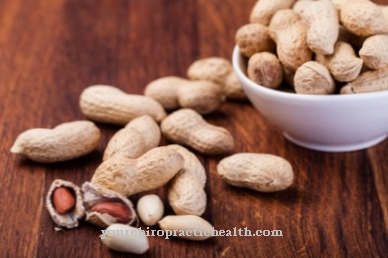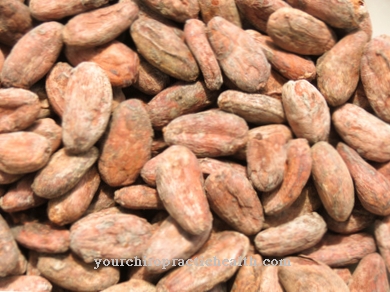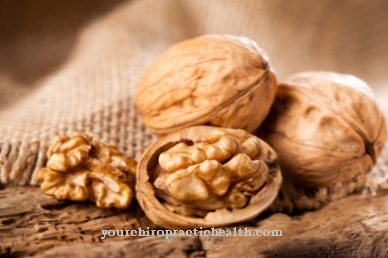The Mirabelle is known from France, where it has been popular for around 600 years. In contrast, it has only been at home in Germany for 300 years. They belong to the plums and the rose family. The mirabelle plum is the smallest and finest variety.
What you should know about the mirabelle plum

The Mirabelle is the little sisters of the plums and botanically it is a subspecies of the plums. The Mirabelle has its origin in Asia. The yellow type of plum originated from crossings of the cultivated plum.
It came to Europe in the 16th century, where the mirabelle tree became very quickly at home. Lorraine is the largest growing region. There are different types of mirabelle plums. Some are dependent on a pollen donor, while other self-fertilizing varieties do not need cross-pollination. The best-known varieties include Nancy, Bellamira and Metz-Mirabelle. The popular sweet fruits are used almost exclusively for the production of fruit brandies and liqueurs. A mirabelle plum weighs only about ten grams. Typical for them are the spherical shape and the golden yellow color.
The side of the stone fruit that got a lot of sun is also dotted in red. The firm flesh of the Mirabelle plum is orange-yellow to green-yellow. It dissolves easily from the core and tastes very aromatic, sweet to sweet and sour. The harvest time for mirabelle plums is from July to September, when the plant needs a lot of sun so that the fruits can develop their full aroma. The tree can reach heights of up to five meters and prefers warm sandy soils that do not dry out.
But there are also trees that are only 1.50 meters tall. Mirabelle plums can also be grown in smaller gardens due to their fairly small size. The trees are known to often bear profuse fruit. The mirabelle plum is harvested by shaking the tree on which the fruits are hanging.
Importance to health
The mirabelle plum is not only one of the sweetest and most popular garden fruits, it is also very healthy. The mirabelle plum is primarily characterized by its high potassium content, which has a dehydrating effect and promotes digestion.
This is the number one reason the fruit is so popular, especially with celebrities and strength athletes. You eat them shortly before an appointment in public or before competitions, as water is withdrawn from the body, making the silhouette appear narrower and the muscles have clearer contours and look more defined. Potassium is also important for a well-functioning heart and nerves. The mirabelle plum also contains a lot of vitamin C.
This strengthens the immune system and, especially in winter, colds can be prevented or alleviated. The Mirabelle also does a good job for the metabolism. Vitamin C is also involved in the development of connective tissue.
Ingredients & nutritional values
The most important ingredients of the mirabelle plum include a lot of potassium, magnesium, phosphorus, iron, zinc, pectin and vitamins. The fructose contained is responsible for the sweet taste. Furthermore, the Mirabelle delights with plenty of beta-carotene, which is the precursor for vitamin A, with vitamin C and various B vitamins. Since the Mirabelle contains little acid, it is also well tolerated by people with a sensitive stomach. The mirabelle plum also contains protein, fiber and carbohydrates.
Intolerances & allergies
Those who like to eat the mirabelle should not miss the high season from July to August, because it is important to buy well-ripened fruit. Otherwise, unripe fruits may not be tolerated and lead to stomach cramps and diarrhea. In addition, it is possible that people who suffer from fructose intolerance suffer from a feeling of fullness and gas after consuming it. Sometimes it can even lead to cramping abdominal pain and diarrhea.
Shopping & kitchen tips
When buying the mirabelle plum, care should be taken to select well-ripened fruits of high quality. This is usually the case in the market. The skin of the fruit must not be damaged and the pulp is as elastic and soft as possible.
Mirabelle plums that are harvested very hard either do not become soft at all or they do not have a good aroma. Since they hardly ripen, an optimal degree of maturity is very important. Since the very sensitive fruits spoil quickly, however, overripe mirabelle plums should not be bought. It is advisable to keep them in the refrigerator for a maximum of two to three days until they are used. However, it is also possible to freeze them. To do this, after washing, they are put into a bag that is tightly closed. These fruits must be consumed within one year.
There is not much to do in terms of preparation: they are washed and, after draining or gently patting dry, they can be consumed or processed further. If the mirabelle plum is to be boiled or baked, it must first be halved and pitted, which is very easy to do with the fruit. It should only be cleaned when it is consumed, otherwise the waxy protective layer of the mirabelle plum will be destroyed.
Preparation tips
The ripe mirabelle plum is of course suitable for raw immediate consumption. Together with vanilla, honey and almonds, a very special taste experience is created. But the mirabelle plum also offers many other uses. It is often used to make liqueur or fruit brandies from it, because the sweet aroma of the mirabelle plum unfolds particularly well here. Due to the sweetness and the good solubility of the stones in the fruits, they are also very popular as the last fruit and as the top layer in a rum pot or bottled with alcohol and aromatic spices.
The fruits are also used for preserving, for example for jam. They also taste delicious as compote, fruit salad and juice. The high content of fructose is enough to give food or drinks the sweetness they need. Classics are also cakes and tarts with mirabelle plums, because the special aroma comes into its own here too. They are also very popular additions for picnics and breakfast breaks. The mirabelle plum can even be used well in the spicy kitchen.
Oriental dishes in particular are known here, for example fruits that are pickled in vinegar. Carrots and zucchini also go well with the fruit. For spicy dishes, we recommend using mirabelle plums that are harvested early. No matter which dish is conjured up, the juicy mirabelle plum is sure to create sweet and savory delicacies.













.jpg)

.jpg)












